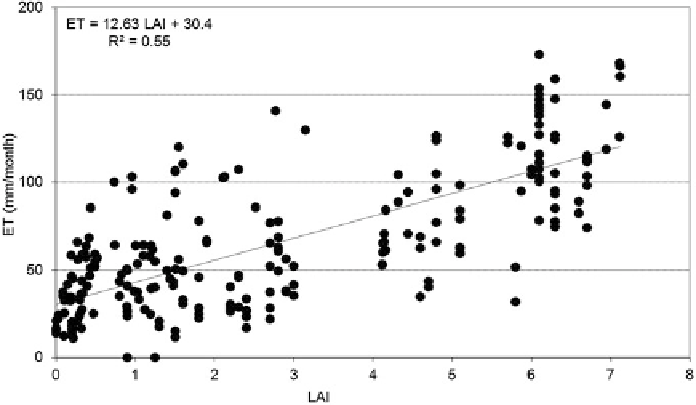Environmental Engineering Reference
In-Depth Information
15.2.4 Leaf Area Index and Rooting Depth
Forests have larger leaf area, deeper roots, and biomass and therefore forests can
generally intercept more precipitation and transfer more water from soils to the
atmosphere through evaporation and transpiration when compared to bare land or
vegetated surfaces with short crops. Indeed, Leaf Area Index (LAI) (total leaf area
per unit of ground surface area) is a very important land surface characteristic that
controls seasonal evapotranspiration dynamics (Fig.
15.3
) (Sun et al.
2011a
).
Indeed, leaf area index dynamics reflect not only the amount and heath of biota but
also the environmental conditions such as light, water, nutrient associated with the
biota. Larger LAI means higher canopy conductance and higher capacity to
transfer more water from the soils to the atmosphere.
Similarly, forests generally have deep and massive rooting systems, 'the
underground forests', that are advantageous over vegetated covers to extract water
from soil moisture reservoirs even groundwater to meet water demand. Deep roots
allow trees to adjust to droughts and stabilize water use under water stress con-
ditions. The active functions are import machinists of climate change adaptation
and ecological feedbacks to climate change (Jones et al.
2012
).
Fig. 15.3 Leaf area index (LAI) is a major control for seasonal evapotranspiration (ET). Data are
derived from 13 eddy flux and sapflow measurement sites across a large climatic and ecosystem
gradient in China, US, and Australia (Sun et al.
2011a
)

Search WWH ::

Custom Search